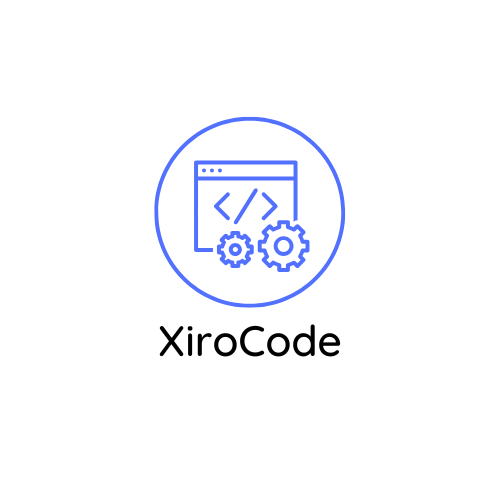In the fast-paced world of software development, methodologies are like the GPS guiding teams through the winding roads of project management. They help navigate challenges and avoid the dreaded traffic jams of confusion and miscommunication. But what exactly does a software development methodology encompass? It’s not just a fancy term thrown around in meetings to sound smart; it’s a crucial framework that can make or break a project.
A Software Development Methodology is a Framework for Which of the Following? Select all That Apply.
Software development methodologies provide structured frameworks for organizing and managing projects. They guide teams in crafting software efficiently while promoting collaboration and communication. Each methodology offers distinct processes, roles, and documentation practices.
Agile emphasizes iterative progress through short cycles, fostering flexibility and regular feedback. Scrum, a popular Agile framework, focuses on sprints that last two to four weeks, allowing teams to adapt quickly to changes. Kanban enhances workflow visualization, promoting continuous delivery and prioritization of tasks.
Waterfall presents a linear approach where each phase must complete before the next begins. This method benefits projects with well-defined requirements, facilitating progress tracking. However, its rigid structure may not accommodate changes easily.
Extreme Programming (XP) enhances software quality through frequent releases and customer involvement. It encourages regular testing and integration, resulting in high-quality outcomes. Lean promotes efficiency by eliminating waste and optimizing resources, making it suitable for startups seeking rapid delivery.
DevOps combines development and operations, emphasizing collaboration to automate and streamline processes. It positions teams to respond quickly to market demands while ensuring software reliability.
Selecting the appropriate methodology depends on project requirements, team expertise, and stakeholder preferences. Each framework presents unique advantages and challenges, affecting overall project success. Understanding these methodologies empowers teams to better evaluate their approaches and achieve desired outcomes.
Types of Software Development Methodologies

Software development methodologies serve as essential frameworks that guide project management. Each approach addresses specific project needs and team dynamics.
Agile Methodology
Agile methodology promotes flexibility and iterative development. Teams work in short cycles known as sprints, allowing for regular adjustments based on feedback. This method emphasizes collaboration among stakeholders, ensuring continuous improvement and adaptability throughout the project lifecycle.
Waterfall Methodology
Waterfall methodology follows a linear and sequential process. Each phase must be completed before moving to the next, which is well-suited for projects with clearly defined requirements. Documentation plays a crucial role, making it easier to maintain a clear structure and scope.
DevOps Methodology
DevOps methodology blends software development and IT operations. This integrated approach fosters collaboration between development teams and operational staff. Emphasis on automation and continuous delivery streamlines processes, enabling quicker responses to changes in project requirements.
Scrum Methodology
Scrum methodology offers a structured yet flexible framework within Agile development. Teams work in predefined roles, including Scrum Master and Product Owner. Daily stand-up meetings facilitate communication, while sprint reviews and retrospectives ensure the team reflects on progress and adapts efficiently.
Key Components of Software Development Methodologies

Software development methodologies incorporate essential components that streamline project execution. Each component contributes to successful software delivery and enhances overall project management.
Planning and Requirements Gathering
Gathering requirements marks the starting point of any development process. Teams collaborate with stakeholders to identify needs and document specifications. Prioritizing features helps in aligning development with client expectations. Effective planning involves creating a roadmap outlining project scope, timelines, and resources. Accurate requirement gathering minimizes misunderstandings later in the process, ensuring all parties share a common goal.
Design and Development
Designing software entails defining system architecture and user interfaces. Close collaboration between designers and developers fosters a cohesive product vision. Development begins after securing design approval, where programmers write code based on documented requirements. Iterative development allows teams to refine software continuously, enhancing user experience with each iteration. Employing version control systems supports collaborative coding while maintaining code integrity throughout the process.
Testing and Deployment
Testing plays a critical role in ensuring product quality. Teams conduct various tests, including unit, integration, and user acceptance, to identify defects. Feedback from stakeholders informs necessary adjustments before final deployment. Automated testing tools streamline this process, enabling quicker identification of issues. Once testing validates functionality, teams deploy the software to production environments, making it available to users. Continuous integration practices help maintain a stable deployment cycle, facilitating updates and improvements.
Benefits of Using a Software Development Methodology

Using a software development methodology provides clear advantages for project management. Improved organization allows teams to structure their workflow systematically, leading to enhanced productivity. Transparency becomes more achievable as methodologies encourage regular communication among team members, enabling everyone to stay informed about project progress.
Predictability is another benefit. Established frameworks deliver timelines and expectations that help stakeholders gauge project advancements. Quality assurance is bolstered through defined testing stages which ensure that each product iteration meets specified criteria before moving forward.
Risk management plays a significant role as well. By adhering to structured methodologies, teams can identify potential problems early in the development cycle. Iterative processes within frameworks like Agile allow for adjustments based on feedback, reducing the likelihood of major setbacks.
Enhanced collaboration results from clearly defined roles within methodologies. For example, Scrum includes specific responsibilities for the Product Owner, Scrum Master, and team members, fostering accountability and efficiency. Similarly, DevOps promotes cooperation between development and operations teams, streamlining the entire software delivery process.
Flexibility is highlighted through methodologies that adapt to changing requirements. Agile frameworks provide the ability to pivot based on user feedback, making it easier to align with client expectations. This adaptability directly contributes to higher customer satisfaction.
Ultimately, choosing the right software development methodology aligns with project goals and team dynamics. Tailoring the approach helps maximize strengths and address weaknesses, resulting in successful project outcomes.
Common Misconceptions About Software Development Methodologies
Many individuals believe that software development methodologies are rigid processes that stifle creativity. In reality, methodologies provide structured frameworks that allow teams to innovate within defined parameters. Flexibility remains a core tenet of most approaches, particularly Agile, which embraces changes even late in the development cycle.
Some think that adopting a methodology automatically guarantees project success. While methodologies improve organization and efficiency, success hinges on a team’s ability to implement them effectively and adapt to specific project needs. Using a methodology requires commitment from the entire team, ensuring everyone understands their roles and responsibilities.
Another misconception involves the idea that methodologies are only for larger teams or organizations. Smaller teams can benefit significantly from structured approaches as well. Implementation of a framework like Scrum can provide clarity and enhance communication among team members, regardless of team size.
A common belief is that methodologies hinder quick decision-making. However, frameworks like DevOps encourage rapid iterations and feedback loops. This ability to respond promptly to changes can actually speed up project timelines.
People often overlook the importance of documentation within methodologies, assuming it is just busywork. Documentation plays a crucial role in maintaining project transparency and ensuring alignment among team members. Clear documentation supports stakeholder engagement and informs all parties involved in the development process.
Finally, some assume that once a methodology is chosen, it can’t be altered. Teams frequently adapt methodologies to better align with their unique workflows and project demands. Continuous reflection, as seen in Agile frameworks, allows teams to refine their approaches and incorporate lessons learned into future projects.

